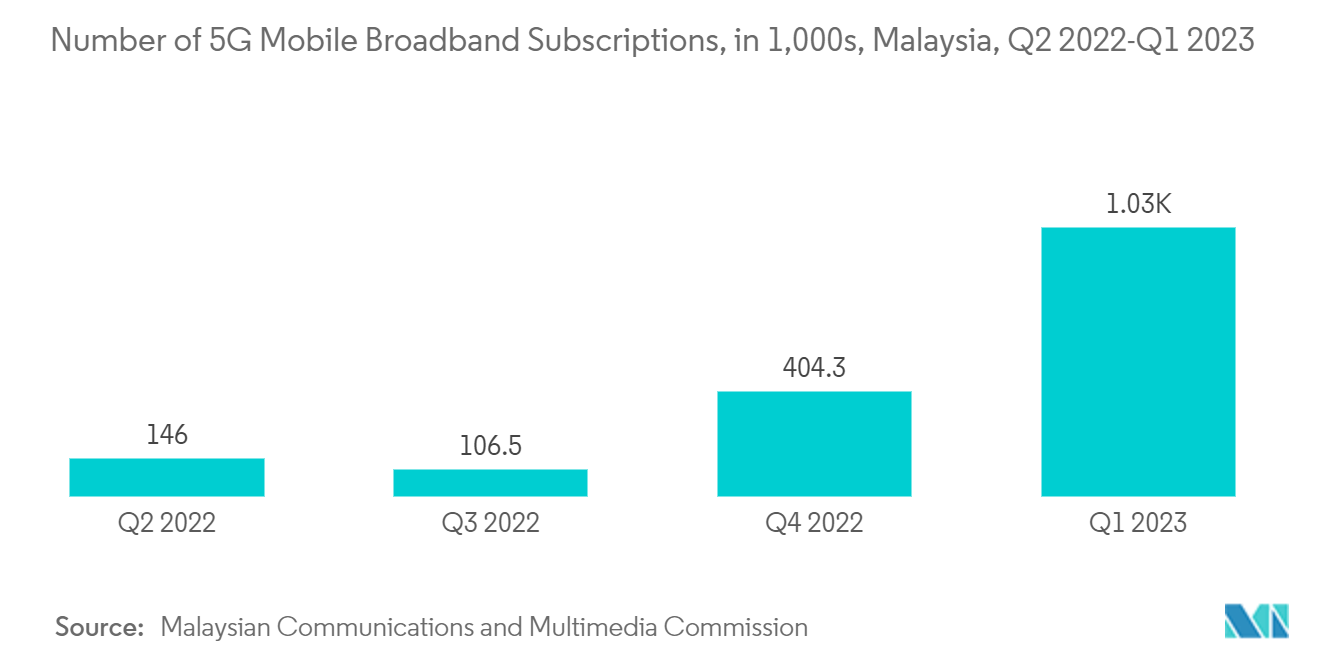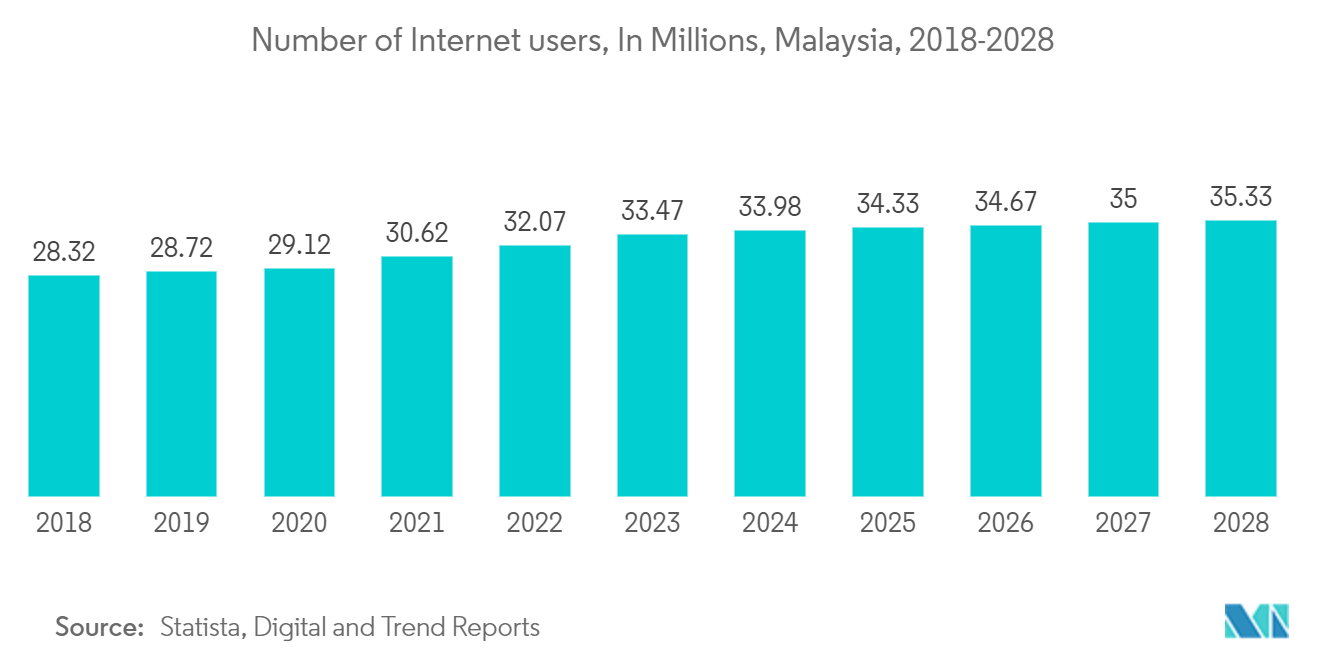Market Trends of Malaysia Data Center Power Industry
The IT and Telecommunication Segment Holds a Major Share in the Market
- Malaysia is going through an extended negotiation phase in the telecom sector. The two sides here are the government and the four main operators in the Malaysian telecom landscape: Maxis Berhad, Celcom Axiata Berhad, Digi Telecommunications, and U Mobile. In 2023, these four operators have requested a review of the government’s 5G access offer as they want at least a 51% stake in the government-owned 5G agency DNB.
- The development of digital infrastructures, such as data centers, is central to enabling 5G applications. With this, various investors are signing an agreement for the 5G launch. For instance, in November 2022, Malaysian telcos Celcom and DiGi approved the merger agreement. Once the two companies are fully merged, the new entity will be one of the largest carriers in Malaysia, with over 20 million subscribers.
- In context to data center investment for telecom, in the recent past, TM ONE, a business unit of state-controlled telecommunications company Telekom Malaysia, invested up to MYR 300 million (USD 70.94 million) for the development of a data center in Johor Bahru to cater to the increasing demand from foreign entities. The facility is currently constructed as a core data center. With the growing scope of 5G in Malaysia, the data flow will increase exponentially, catering to the need for colocation.
- Celcom and DiGi have also approved a merger agreement. Once the two companies are fully merged, the new entity will be the largest carrier in Malaysia, with over 20 million subscribers. The company also said that the implementation of 5G technology would have a positive impact of MYR 150 billion on the country’s GDP and create 750,000 jobs.
- Moreover, rising smartphone users, coupled with discounted internet services and the increasing data traffic per smartphone, drive the demand for telecom services, creating more need for data storage space leads to rising demand for data center power infrastructure in the region.

Monitored PDUs to Hold a Significant Share in the Market
- Electricity has become a critical factor in driving Malaysia's economy and ensuring long-term progress and lifestyles for millions of Malaysians. The demand for power in Malaysia is likely to exceed the total GDP over the long term, driven by the ongoing growth of the economy, industrial development, and urbanization. Electricity consumption is rising at all levels and is expected to increase by 2.37 times to 248,063.8 gigawatts by 2050, with the industrial sector accounting for the majority share.
- Energy security and equity are put at considerable risk by the above-mentioned cases. To address this, the government of Malaysia has planned a decrease in the use of fossil fuels, enhanced energy efficiency in industrial and commercial sectors, and increased the share of renewable energy. The Federal Government's commitment to energy transition is illustrated by the introduction of a National Energy Strategy, 2022-2040 (DTN). By promoting increased demand-side management and encouraging the development of green technologies, as well as by strengthening the energy sector workforce to take into account future industry needs, DTN is leading pragmatic steps towards a cleaner energy mix.
- In addition, increasing focus on digitalization, internet penetration (reached 96.8% by the start of 2023 from 89.6% during the same period in 2022), and e-commerce sales across the country create more need for storage facilities, resulting in huge demand for data centers and a rise in power consumption. Thus, the increasing demand for data storage has led to the deployment of intelligent power distribution units (PDUs) against simple multi-socket rack installations with server and network equipment, which optimize power consumption in data centers.
- Monitored rack PDUs are essential components in data center and server room infrastructure, providing real-time monitoring of power usage, voltage, current, and other electrical parameters. This data helps administrators make informed decisions about power allocation and capacity planning.
- By tracking power usage trends, administrators can plan for future growth and ensure that power capacity is not exceeded, preventing overloads that could lead to equipment failures. Also, it helps identify inefficiencies and optimize energy usage. This can lead to cost savings and a reduced environmental footprint by eliminating unnecessary power consumption. Also, it allows administrators for remote access and control, reducing the need for physical presence and minimizing operational disruptions.
- Because of the above advancements and the necessity to reduce electricity consumption as per government measures in the country, key players were focusing on introducing energy-efficient products into the market. In May 2023, Eaton, which provides the power management service, launched G3 Universal Input Rack PDUs with dynamic C39 outlets capable of accommodating different plug configurations and input voltage requirements. To meet the most diverse data center rack power requirements, G3UPDU has added new features.
- In May 2023, Legrand, a significant global provider of electrical and digital building infrastructures, introduced the next generation of intelligent rack PDUs PRO4X and Raritan PX4; these new intelligent rack PDU designs revolutionize capacity planning, environmental monitoring, physical and digital access control, workload optimization, and uptime initiatives. Such developments in the segment are predicted to boost the market’s growth during the forecast period.


